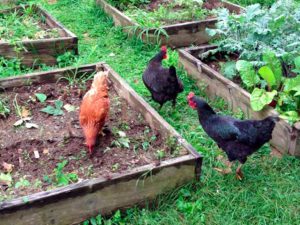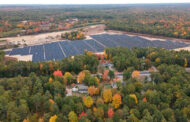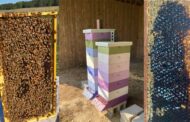Garden for Fun, Food, and Now to Fight Against Climate Change
By Jennifer Ruggiero

As we collectively attempt to navigate the climate crisis and find ways to reduce environmental impacts on an individual level, carbon is usually at the forefront of the conversation. While we reduce consumption, switch brands, and change habits, there is something right out your backdoor working in your favor. Your yard and garden are chugging along working as a carbon sink.
A carbon sink is “anything, natural or otherwise, that accumulates and stores some carbon-containing compound for an indefinite period and thereby removes carbon dioxide from the atmosphere.” Carbon sinks, or sequestration strategies, are being deployed globally. Typically, it refers to large swaths of land being set aside for reforestation/afforestation efforts, or even ocean space for kelp forests. However, gardening also contributes to this effort.
Whether for flowers or food, admiring the latest bloom or crop brings joy, satisfaction, even pride. Now it can bring you one step closer to achieving your personal climate goals.
It goes without saying there are techniques (pesticides) and equipment (gasoline mowers) that negatively contribute to overall efforts. In general though, if you’re looking for ways to increase the carbon capture of your backyard, there are some easy things to do.
Maximize your Garden as a Carbon Sink
· Selection. Different plants have different capacities for carbon capture. For instance, a tree captures more carbon than grass. Perennials capture more carbon than annuals.
· Diversification. Planting a cross-section of plants, specifically native types, improves soil health and supports wildlife.
· Retention. Bare soil is at risk for losing carbon. Keeping it covered in fall and winter, or ensuring ground cover during growing months, will keep carbon locked in the ground.
· Reclamation. Use compost as fertilizer. It diverts food waste from landfills, reduces the production of harmful methane when food waste is locked away in landfills, and makes use of yard trimmings.
· Incorporation. Nitrogen is crucial to carbon-fixing. Instead of turning towards commercial fertilizers, consider incorporating nitrogen-fixing plants for the assist.
Sometimes the choices we must make to ensure we aren’t causing harm to natural cycles are difficult. However, gardening doesn’t have to be one. With some simple switches your backyard could be your number one ally. Wouldn’t it be great if each yard offset the carbon use of the household?
Check out how local organizations are helping: Wild Seed Project and SoPo’s 100 Resilient Yards.






